Good things come in small packages – but sometimes, they’re maybe a bit too small.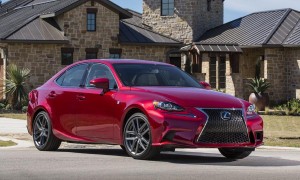
Hence, Lexus’ re-bopp of the IS series sport sedan. It’s bigger now – with a passenger-viable backseat.
Unlike its most obvious competitor – the Mercedes-Benz CLA. Which is a gorgeous car and a hell of deal, with a brilliant drivetrain (potent turbo four, almost 40 MPG on the highway) but a medieval back seat (27.1 inches of legroom, almost five inches less than a Fiat 500’s backseats . . . and three inches less headroom, too).
The new IS has 32.2 inches in the second row.
Tight, but viable.
And a vast improvement over the old car’s CLA-esque 30.6 inches.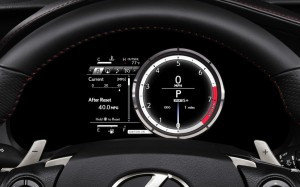
Even better, the very strong – and very torquey – 3.5 liter V-6 carries over, paired with a new eight-speed automatic (in RWD models; AWD models still get last year’s six-speed automatic). This engine is unusual in the class – where turbo fours (as in the CLA, the BMW 3 and Audi A4) have become common.
There’s also a much hotted-up body and interior – the former a high-dollar dominatrix in a skin-tight Matador Red Mica leather suit that leaves nothing to the imagination; the latter looking and feeling like the flight deck of a single-seat, fly-by-wire fighter – afterburners ready to light.
Unfortunately, the embarrassingly underpowered/underperforming 2.5 liter V-6 also carries over (as the standard engine in the base IS 250).
And there’s no manual transmission option with either engine.
But – per Wilfred Brimley – you do the best you can with what you’ve got.
And what you’ve got here is pretty good.
The IS series is Lexus compact luxury-sport sedan, which edges a bit closer to being a mid-sized luxury-sport sedan this year. It is bigger (and roomier) than a Benz CLA – but not quite as roomy on the inside as a BMW 3, despite being slightly larger on the outside now.
Or – vis-a-vis another rival brand – it is larger than an Audi A3, but not quite as large as an A4.
And neither of these Audis packs more than a four.
The IS comes in 250 and 350 version, the two cars being identical except for their drivetrains, roster of equipment – and sticker prices.
The IS250, in rear-wheel-drive form and powered by a smallish (and sluggish) 2.5 liter, 204 hp V-6, starts at $36,100.
With the optional all-whee-drive system, this climbs to $38,635.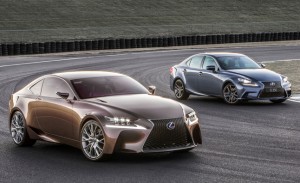
An IS350 with the much more potent (306 hp) 3.5 liter V-6 and rear wheel-drive starts at $39,615.
With AWD, the sticker price is $41,850.
This pricing structure places the IS to the right of the much more accessible Benz CLA ($29,900 to start; $31,900 with AWD) and the physically bigger BMW 3, which starts at $32,750 for the 320i ($37,300 for the power/performance-comparable 328i).
People shopping in this bracket might also want to take a look at the just-launched 2015 Audi A3. The 1.8 liter version starts under $30k – like the Benz CLA – and is quicker than the 2.5 liter IS250, while offering human-viable backseat accommodations. Or – if something larger is wanted, there’s the Audi A4, which starts at $33,800 and tops out at $35,900 with Quattro AWD and 220 hp 2.0 turbo four cylinder engine.
The Infiniti Q50 (formerly the G37) is another option – if you want an outright mid-sized luxury-sport sedan.
A major skin job.
Although the engines – base 2.5 liter V-6, optional 3.5 liter V-6 – carry over unchanged, the cars they’re installed in are effectively all-new. The ’14 IS (250 and 350) are about 3 inches longer overall, ride on a roughly 3 inch longer wheelbase – and are several inches roomier on the inside as a result.
The mucho macho LF-themed styling is new, too – as is the uber-slick “flight deck” interior layout.
3.5 liter V-6 bellows like a berserker; eight-speed automatic shifts like a Katana blade slicing watermelons.
A sharp looker.
F-18 dash layout (LCD chronometer tach that moves; more on that below).
Much-massaged 2014 actually costs less than outgoing 2013.
Base 2.5 V-6 is outgunned – and outclassed – by everything in this class.
Both V-6s are guzzlers.
Price is high relative to competitors.
F Sport package adds everything except more engine.
By the numbers, the base IS250’s 2.5 liter, 204 hp is competitive with the Mercedes CLA’s standard 2.0 liter, 208 hp turbo four.
Well, by some of the numbers.
Dig into it a little deeper and the comparison begins to curdle.
Because though the output is close enough for government work, the IS is a larger – and significantly heavier – car than the CLA (3,593 lbs. vs 3,262 lbs., a difference of 331 lbs.). The tiny V-6 is also severely torque deficient: just 185 ft.-lbs. at a comparatively high 4,800 RPM vs. 245 ft.-lbs. for the turbo’d Mercedes, peaking at just 1,250 RPM. Thus, the under-engined IS250 needs an almost-Corolla 7.5 seconds to reach 60 MPH vs. 6.4 for the Mercedes.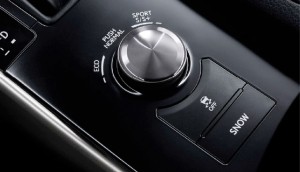
Which might be ok . . . if the IS250 were spectacularly fuel-efficient.
But, it’s not.
The RWD version carries an EPA rating of 21 city, 30 highway – vs. 26 city, 38 highway for the much quicker Mercedes.
The BMW 320i is also better on both counts – performance and economy – despite having a less powerful engine. Its 2.0 liter turbocharged four makes 180 hp, but manages to get the 3-Series to 60 in 7.3 seconds and pulls down 24 city, 36 highway, too.
Again, the reason why is the weight. The 3-Series is a much lighter car: 298 pounds lighter, in fact (3,295 vs. the IS 250’s 3,593 lbs.).
Luckily for Lexus buyers, there is the IS350.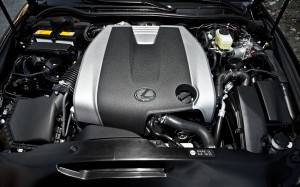
It comes standard with a husky 3.5 liter, 306 hp V-6 and so equipped, it easily out-accelerates the Mercedes CLA and BMW 320i and the Audi A3 – and runs roughly even with the 328i and A4 2.0 turbo.
The zero to 60 time is 5.5-5.6 seconds, depending on the version – with rear-drive versions being slightly quicker than all-wheel-drive versions, which by the way are equipped with the same six-speed automatic used in the previous generation IS. Rear-drive IS350s, on the other hand, get a new eight-speed automatic – which ups the rated mileage to 19 city, 28 highway (up from 19 city, 27 highway last year, with the six-speed automatic).
Note that this is almost as good as the mileage managed by the underwhelming 2.5 liter V-6, notwithstanding a 100-plus horsepower difference (and nearly two seconds’ difference, 0-60) between the two.
I averaged 24.5 MPG during my weeklong test drive – and that was hammering it most of the time.
This is actually better than Lexus’ estimated 22 MPG average for the IS350.
The IS is an interesting counterpoint/alternative in this segment because it’s pretty much the last man standing as far as coming with six rather than four cylinders and relying on displacement rather than turbocharging to git ‘er done.
This has its pros – and its cons (see the gas mileage figures previously mentioned; it takes more to feed six cylinders all of the time than a four on boost some of the time).
The pros include not just robust acceleration (with the 3.5 liter V-6) but also the robust sounds that come along for the ride. The turbo fours in the CLA, 3 Series and Audi A3/A4 are peppy (and punchy) but lacking in the auditory aesthetics department. They don’t sound bad – they just don’t sound like much at all. They deliver their power quietly – and notably, without turbo whistle. Or wastegate snap. Mercedes, et al, have gone to great lengths to mask the sounds of turbocharging – the object of the exercise being to give the driver the feel of a larger (and naturally aspirated) six with the fuel economy of a four.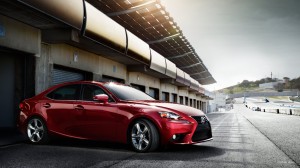
But, something’s gone missing.
And the IS has found it.
Or rather, never lost it.
You’ve heard the term, loud pedal? The IS350’s is exactly that. The big V-6 literally booms when you floor it – in part because it’s strong, in part because of modifications Lexus engineers made to the air-intake system to increase the roar. It’s like back in the ’60s, when some muscle cars had exhaust cut-outs that bypassed the mufflers when you floored it. Only this time, it’s the intake sounds that are enhanced. But unlike the muscle cars of the ’60s, the IS is not an obnoxious Borat of a car the rest of the time. It behaves properly – and quietly . . . until you ask it not to.
If you ordered the $3,180 F Sort package you’ll also get an additional Sport S+ setting for the driver-selectable transmission modes (in addition to Normal and Eco; there’s also a Snow mode, engaged by pushing another button on the console) and snappier throttle tip-in and firmed up suspension settings when Sport S+ setting is engaged. Also included with the package are: sport bike-style “big tach” gauge cluster, F-Sport heated/bolstered sport seats, mesh spindle grille and more aggressive LF-inspired front fascia, LED headlights and staggered size high-performance tires (225/4018s up front and 255/3518s out back) mounted on F-Sport specific 5-spoke powder-coated rims.
Unfortunately, you do not get more engine.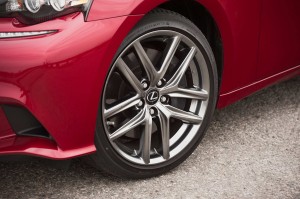
The output of the 3.5 V-6 is the same in F Sport IS 350s as it is in regular IS 350s; there are no enhancements to the intake or the exhaust or the gearing. The only driveline difference between a regular IS350 and an IS350 F Sport is actually an electronic difference – the more aggressive Sport S+ setting described above.
The package would be a stronger sell – especially relative to the BMW 3 (and the muscular Infiniti Q) if it included another 20 hp – or whatever it took to put the IS350 to the top of the performance pile in this segment. As it stands, a CLA 45 AMG – equipped with a 355 hp version of the turbo 2.0 engine in the regular CLA – easily trounces the IS350’s 0-60 time with its scorched earth run of 4.6 seconds. At $47,450 the Benz might actually cost you less than an IS350 F-Sport (my test car, with AWD, Nav system and the excellent 15-speaker Mark Levinson premium audio, stickered for $49,615). A BMW 335i – equipped with a turbo inline six of 3 liters’ displacement – is likewise both quicker (5.2 seconds to 60) and less expensive ($43,400) than an IS 350 equipped with the F Sport package.
Some reviewers maintain the IS still can’t cut the proverbial rug with the perfect syncopation of a BMW 3; that its responses to your inputs aren’t mind-meld perfection, intuiting your desires and making them so.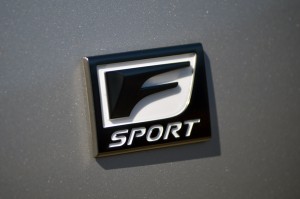
Well, here’s the deal:
The steering is very precise, but the car takes a brief moment to catch up. This is the chief “seat of the pants” difference between the IS and the BMW 3.
You can, however, lean on the IS – hard – and it will not fold on you. It might slide some, but it happens in a predictable arc that actually makes the car very fun to drive bucket list-style. That is, with your right foot as much as with your hands. The stability control will intercede at times, but does so unobtrusively. Unless you’re looking for the little light on the dash – which flashes briefly when the system steps in – you will likely not even notice the computer’s subtle course corrections.
This is commendable in a car of this type.
What isn’t commendable is the Corolla-esque traction control system – which cannot be disabled unless you first come to a complete stop. And which will then insolently turn itself back on regardless once the car reaches 30 MPH. Such nannyish overseeing is fine in a Corolla – or a Camry. They are grocery getters.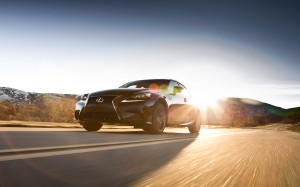
The IS isn’t – and it deserves better.
That aside, it’s lively and capable – and most of all, different. Keep in mind that – with the exception of the BMW 3 and the Infiniti Q – the other cars in this general class are based on front-wheel-drive layouts and typically have little turbo fours under their hoods, not large caliber sixes. There is nothing wrong with the FWD-based layout of the Mercedes CLA or the Audi A3/4. Nor with their excellent – and fuel efficient – turbo fours. But the experience is different, both viscerally and audibly.
It’s nice to have that choice available.
Having grown almost 3 inches (lengthwise as well as wheelbase-wise) the IS now almost-mid-sized. Or put another way, it’s now a smallish mid-sized car, like the BMW 3. In fact, it’s slightly larger overall than the BMW 3 – which is 182.5 inches long vs. 183.7 for the new IS. And it’s a lot larger than a true compact like the Audi A3 – which is 8.3 inches shorter (175.4 inches bumper to bumper).
It is also more space-efficient than the otherwise out-of-the-park Mercedes CLA, which is gimped by its clown-car back seats. Though the IS is only slightly bigger on the outside (1.4 inches longer overall) it has 5.1 inches more legroom for the back seaters than the Benz does.
On the other hand, the IS is not quite as roomy as either the A3 – which, recall, is a much smaller car – or the A4, which is larger. The real estate disparity is not surprising, vis-a-vis the A4; one expects the bigger car to be the roomier car. But the A3 surprises – and delights – with nearly three inches more backseat legroom, despite being 8.3 inches shorter overall than the Lexus.
Still, it’s a big improvement over last year’s IS – which had 30.6 inches of second row legroom. It must also be mentioned that the new IS has more front row legroom than anything else in its class – and then some. How’s 44.8 inches grab you? That’s 4.6 inches more than in the Benz CLA, 3.5 inches more than the A4 (and 3.6 inches more than in the A3) and 2.8 inches more than in the BMW 3. Even the much longer/larger (by about 5 inches) Infiniti Q’s got less space up front (44.5 inches) 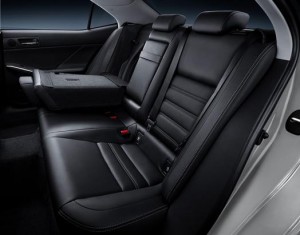
But it may be the new metal above all else that’s apt to tingle prospective buyers’ car lust. For generally conservative Lexus, the latest IS comes across like a patched-in member of the Sons of Anarchy. Or rather, what one of the Sons might keep tucked away in the garage for those days when a Harley (and a wife-beater T) simply won’t do.
The new car appears to sit much lower than the old IS – an effect created by the snake-eye slit headlights that seem to bleed in toward the enormous “double spindle” cowcatcher grille (F-Sport versions receive an even more visually arresting “wire mesh” grille) that sweeps outward to meet up with dummy brake cooler intakes on either side. Radiused power bulges (911 style) flow over the wheel-wells, in which are housed those stagger-sized rims (18s for the F Sport) and tires – larger in back than up front.
The hood appears to bulge, too – though it doesn’t actually – due to the downward arcing pleats on either side that bleed back to the base of the A pillars at the windshield. Both front and rear headlights have LED “Ls” – laid down on their sides – to remind everyone this is a Lexus.
The interior is one of Lexus’ best yet, too – and like the big V-6, it’s cut from a different cloth than the others in this segment. The centerpiece is a sport bike-style LED tachometer that color-shifts depending on the drive mode you’ve engaged and also slides right on command to reveal an LED driver information cluster. This is more than just a gimmick. It keeps data such as GPS map position, the radio station you’re listening to, etc. – in the driver’s line of sight.
Vertically situated on either side of the steeply angled center stack are perhaps the best “haptic” finger touch/slide controls extant – or at least, that I’ve tested to date. The touch sensitive scales you use to adjust the temperature settings are actually touch sensitive – but not too sensitive. No maddening double backing/correcting/tapping/swiping again.
Some reviewers don’t like the Remote Touch mouse controller input that’s used to control the audio/infotainment and navigation systems. I disagree with them. Uniquely – and ergonomically – the Lexus has a form-fitting pad for your palm to rest on. The “mouse” is actually a toggle – with just the right amount of drag built into it. Like the finger-swipe controls for the temperature settings, the action of the input is precise and controllable. Slide/scroll to what you want to engage, then click to engage.
Fighter jock’s gloves ought to be included with the keys.
The chief beef most buyers will likely have with this car is its price tag. Especially the price tag of the under-engined, under-performing IS 250. It starts out some $6k higher than the very appealing (though back seat constricted) CLA, and about $3k more than the larger – and also quicker – Audi A4. Indeed, you could buy a loaded A4 2.0 Quattro ($35,900) and still be under the RWD IS250’s base price ($36,100). An Infiniti Q50 with 328 hp V-6 is only slightly more costly: $37,150 to start.
The IS250’s performance-to-fuel-economy ratio is also extremely unfavorable. Mid 20s, average – and mid sevens, 0-60 – just isn’t cutting the mustard.
But otherwise…
If this car – the IS350 – had another 20-40 hp and could be had with a six-speed manual transmission, there’d be dancing in the streets. Maybe not in Bavaria, of course. But if the object of the exercise is to boggle BMW, menace Mercedes, make Infiniti indignant (and embarrass Audi) then the Next Step ought to be taken – and boldly so.
Ditch the IS250 – and get serious about the IS 350. The F Sport version, at least.
But what we’ve got here is a helluva an improvement – and a helluva basis for more.
Throw it in the Woods?


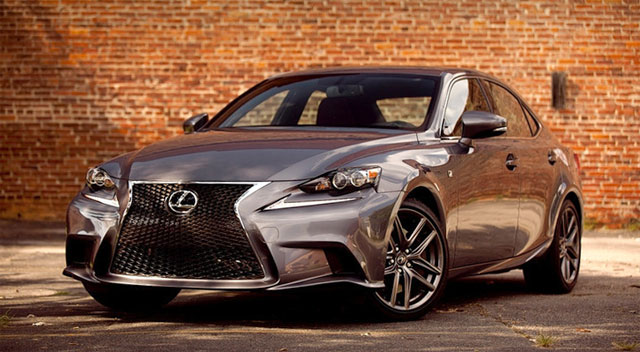

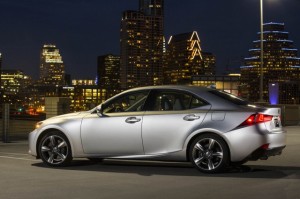
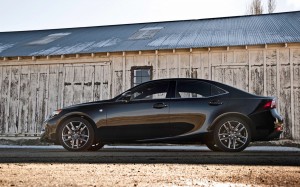
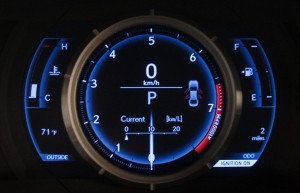

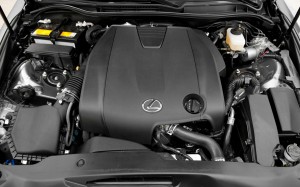

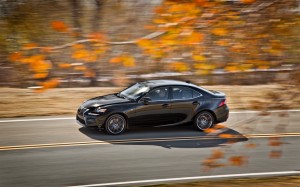

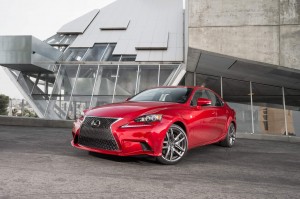
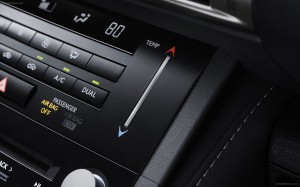







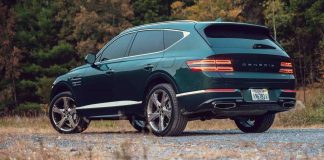
These cars are over teched and over priced. Compared with a BMW 320, the IS 250 sits like a park bench and wheezes down the road. For reasons of my own, I get the urge to rescupt the body on that thing. It looks like a Corolla.
Ouch!
I agree with you on the performance/price problem of the 250… the thing ought to be around $28k instead of $36k….
I agree on the action of the navigation mouse – it’s what all the other cars should have. While Mercedes has a new controller in the C-Class, what they’ve done is moved the touch-sensitive part of the screen to the console. You still have to pay way more attention to it than you should (taking attention away from driving), whereas the Lexus “car mouse” is intuitive to anyone that’s used a computer in the last 20 years.
Ditto, Chip.
I can’t figure why so many of my fellow car scribes trash the Lexus set-up, but praise the clumsy systems used in Mercedes and BMW vehicles…